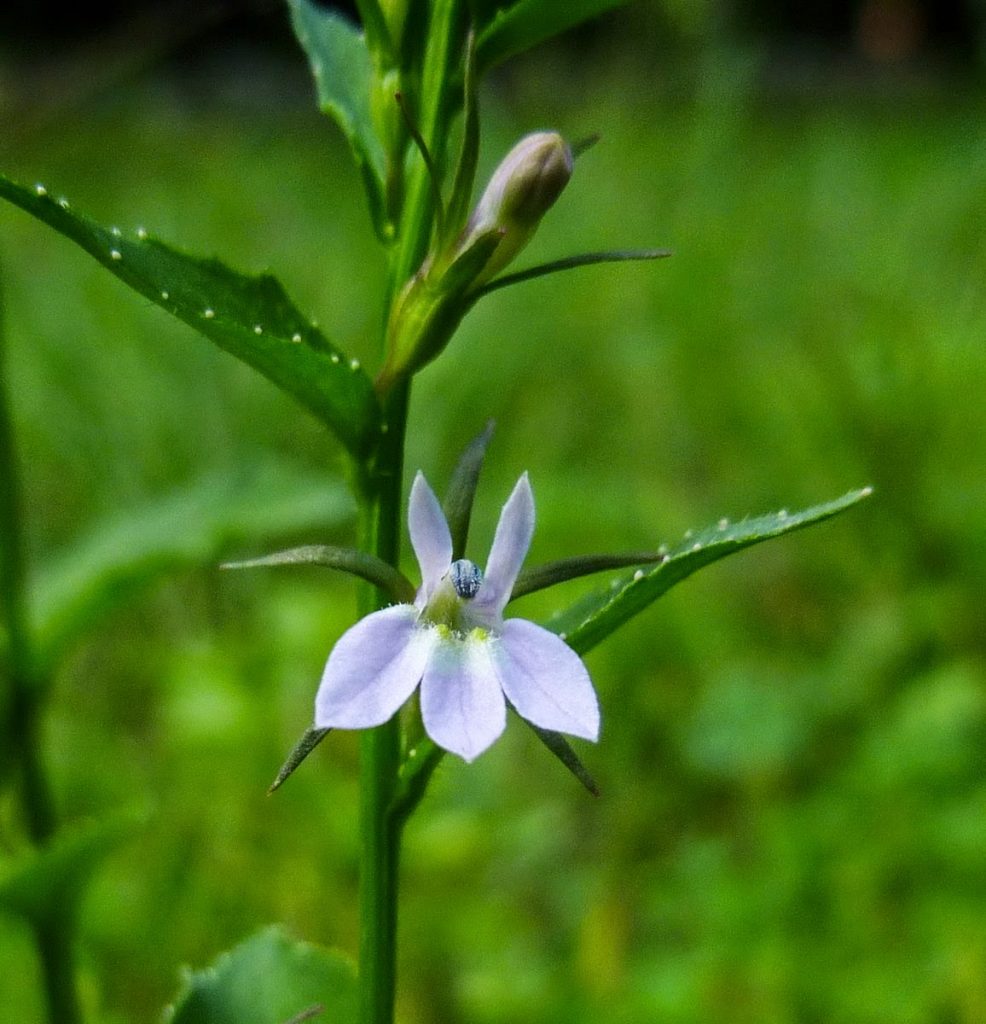Description
Spagyric tincture of Lobelia Inflata.
Take 3 drops when in need. This is a low dose herb. It is a purgatory and induces vomiting taken in larger doses.

It is hard to understand addiction unless you have experienced it yourself. – Ken Hensley
![]()
Lobelia is also called “Indian tobacco” and has a long history of use as an herbal remedy for respiratory conditions such as asthma, bronchitis, pneumonia, and cough. Historically, Native Americans smoked lobelia as a treatment for asthma. In the 19th century, American physicians prescribed lobelia to induce vomiting in order remove toxins from the body. Because of this, it earned the name “puke weed.” It is a purgatory, it means that it makes you vomit if taken in larger doses.
![]()
Lobelia impacts neurotransmitter activity in a way that is similar to nicotine. The active ingredient, Lobeline, is a both a nicotine agonist and antagonist derived from an Indian plant “lobelia inflata.” Here's what that means:
The brain has neurotransmitter receptor cells that have been labeled 'nicotinic' receptors because they are stimulated by nicotine. Lobeline acts on these cells as an 'agonist,' which means that it binds to these cells and stimulates them in a similar way to nicotine. (The effects are not as strong as nicotine, however.) Because the drug is in effect 'parked' at the receptor sites on these cells, it also partially blocks nicotine from activating them, thereby reducing the effect of nicotine in the brain from smoking, and helping to reduce the 'reward' associated with smoking.
Interestingly, unlike nicotine, which is highly addictive, lobeline does not appear to be addictive. This may be because of its structural differences from nicotine, and the different ways that it affects dopamine storage and release. (Dopamine is another a neurotransmitter – one that is implicated in addictive patterns of behavior.)
Rather than stimulating the release of dopamine in the normal way (from the presynaptic terminal), lobeline appears to induce the metabolism of dopamine intraneuronally as well as inhibit dopamine re-uptake. The result of this is that rather than getting a 'dose' of rewarding dopamine immediately connected to the behavior of smoking (or of taking lobeline), the dopamine effect is more diffuse. So you still get the pleasant dopamine effect, but because it is not strongly associated with the behavior, it does not induce addictive behaviors, and in fact partially blocks the addictive effect of nicotine intake.
Dwoskin LP, Crooks PA., (2002) A novel mechanism of action and potential use for lobeline as a treatment for psychostimulant abuse. Biochemical Pharmacology. Jan 15;63(2):89-98.
![]()
I made a formula to help people stop smoking or using snuff which is common in Sweden. So far this formula have helped around 12 people in quitting, myself included!
I recomend smokers or snuffers who wish to quit my formula rather than the pure Lobelia spagyric tincture because it has calming and adaptogenic herbs in it that helps the quitter cope with stress.
Take 3 drops when in need. This is a low dose herb. It is a purgatory and induces vomiting taken in larger doses.
